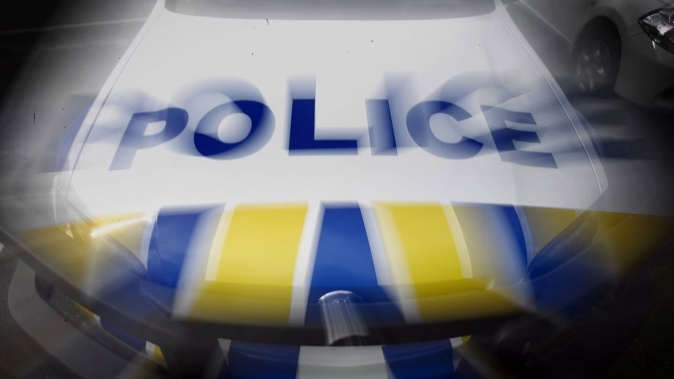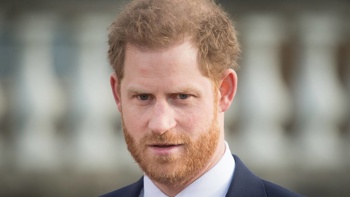
A Coroner has ruled that the death of Paeroa man in a police shooting was not “suicide by cop” - but said his actions were “reckless” and “indifferent” as to whether he would provoke the use of lethal force.
Taylor, 57, was shot dead by police at his Karangahake Gorge farm, west of Waihī in 2016.
Police were cleared of criminal and procedural wrong-doing in the case, but a Coroner opened an inquest in a bid to establish what exactly led to the fatal shooting.
On the morning of June 10, 2016, Taylor’s partner Natalie Avery called police after the couple had a fight that resulted in Taylor throwing a cup of coffee at her neck.
Taylor could be heard saying for police to “bring their guns” in the background of the call.
He then picked up a machete and a slasher and met police they drove over the brow of a hill near the entrance to the property.
Taylor threw the machete at the first police car as it approached, striking the window but not breaking it.
He then walked up to the car, with two officers inside, and raised his arm as if to strike the front passenger window with the slasher.
The officer sitting in the front passenger seat of the car fired a Glock pistol at Taylor through the car window.
The offender was struck by three bullets and collapsed.
- 51-year-old pleads guilty to murder of woman who died following Auckland house fire
- Remains found in the search for missing baby, UK couple arrested
- 'My mind boggled': Victim of masseur who filmed female clients describes impact
The officers immediately rendered first aid, and an ambulance was called, but Taylor died at the scene.
Coroner Peter Ryan held an inquest into Taylor’s death in 2021 and the Herald has this week been provided with his report and findings.
The purpose of the inquest was for Coroner Ryan to formally establish the background facts and events leading up to Taylor’s death; the circumstances of the death; whether it could have been prevented and “was this death a suicide”.
“In addition, I will consider whether any recommendations or comments - based on factors found to have contributed to this death - could be made which may, if drawn to public attention, reduce the chances of further deaths occurring in similar circumstances,” Coroner Ryan said.
On the day of the killing Taylor had alcohol and cannabis in his system, but the Coroner said it could not be determined what if any impact that had on the man’s actions.
He had argued with Avery and she called the police as he was “quite agitated”.
While she was on the phone he left her sight twice, each time returning with a different weapon - the machete and slasher.
Coroner Ryan said Taylor told Avery that “if she called the police it would be the end of him”.
Two patrol cars were deployed from Paeroa to attend the incident.
Given the nature of the call out and Taylor’s history - one of the four officers armed himself before leaving the station.
Taylor had a significant history with police, relating to a number of convictions for assault - some involving weapons - between 1988 and 1995.
In total he had more than 40 convictions spanning 1976 to 2013 for drugs, dishonesty, violence and threatening behaviour -and had served prison time for aggravated assault.
Coroner Ryan said there were also a number of recorded occurrences for Taylor relating to “ongoing threat and intimidation-type activities” in connection with he and Avery’s “perceived land injustices”.
/cloudfront-ap-southeast-2.images.arcpublishing.com/nzme/ML3MJZKIECAKZCMR2YWMLUVHYU.jpg) Coroner Peter Ryan. Photo / File
Coroner Peter Ryan. Photo / File
“These occurrences related to aggressive and intimidating activity on the part of Taylor over public access to the rail trail which bounded their property.
“Taylor and Ms Avery are of the opinion that the rail trail crosses through their land illegally. Council maintains that there is a paper road through the property and that the rail trail is sited on that paper road.”
Coroner Ryan said it was not his job to ascertain who was right in the ongoing issues, but it was important context in terms of Taylor’s death and why police were armed.
“The police officers had been informed that the job involved a male partner threatening the informant with a machete and that he had also thrown a hot drink at her neck,” said the Coroner.
“While on the way to the scene, the officers were also informed that Mr Taylor had walked into the caravan and grabbed a knife.
“They were subsequently informed that Mr Taylor was walking through the horse paddock, and still had the machete and a slasher with him.”
As police drove up to the property they spotted Taylor and stopped the patrol car Taylor was shouting at the police to leave and the armed officer was shouting back at him to put his weapons down.
The officer told the inquest Taylor took a few steps towards the police car and then adopted a “bladed stance”.
The officer drew the Glock and pointed it at Taylor.
The other officer in the car intended to get out of the car with his Taser out to try and speak to Taylor.
Before he could do that Taylor strode towards the car and threw the machete.
Taylor advanced on the police car and was standing outside the passenger window.
The officer in the driver’s seat stayed in the car and attempted to drive away from Taylor.
The Coroner said the officer was “panicked by the threat he perceived” and could not release the foot-operated handbrake.
The armed officer noticed Taylor “appeared to be enraged and very aggressive”.
He moved and police believed he was about to swing the slasher through the car window.
“Shoot him, shoot him,” screamed the officer in the driver’s seat.
“Believing that he had no other option and that if he did nothing then he would be struck by the slasher, (the armed officer) fired two shots in quick succession with his Glock at Mr Taylor, " said Coroner Ryan.
“Peering through the shattered glass of the window, (the officer) saw that Mr Taylor was still standing beside the car door. (The officer) then fired two more shots.”
Taylor was hit by three of the four rounds fired.
One bullet struck his mobile phone which was in his shirt pocket and stopped the bullet from penetrating Taylor’s chest.
Taylor dropped the slasher, turned around and staggered a few metres out in front of the police car before collapsing.
/cloudfront-ap-southeast-2.images.arcpublishing.com/nzme/MKUGWV7WGBGSZJ5A5BKHNB2XUQ.jpg) The armed officer noticed Taylor 'appeared to be enraged and very aggressive'. Photo / File
The armed officer noticed Taylor 'appeared to be enraged and very aggressive'. Photo / File
Both officers immediately got out of the car - armed with the pistol and Taser - and instructed Taylor to stay on the ground.
A third officer arrived and helped them to secure Taylor.
He was put in handcuffs but they were “very soon removed” once the officers appreciated the extent of Taylor’s injuries.
“A quick search of Mr Taylor’s clothing revealed a number of knives, and these were removed,” said Coroner Ryan.
“A radio call was made at 8.31am requesting an ambulance to attend, and police retrieved the first aid kit from the police car to attend to Mr Taylor.
“Initially Mr Taylor was resisting the police efforts to provide first aid, but then he lost consciousness and stopped breathing. At that point, the officers commenced CPR.”
About 20 minutes later the ambulance arrived and paramedics worked on Taylor for a further 15 minutes before confirming he was dead.
Coroner Ryan said Taylor died as a result of gunshot injuries received when the officer fired at him, believing he posed a threat to him “of death or serious bodily injury” due to his proximity and threat “to swing a slasher”.
“(The officer) stated that his perceived cumulative assessment at that point was that he was in a very vulnerable position, facing an armed man who was approximately 5 to 6 m away,” he said.
“(The officer) felt trapped in the police car, with only the door and the glass window of the car protecting him… (he) quickly assessed his options, and decided he could not get out of the police car either through his own door as this would expose him to the threat posed by Mr Taylor’s weapons or by climbing into the back seat and escaping through the driver’s side.
“(The officer) stated that at the time he thought that he could die there… his response was to fire his Glock pistol in an attempt to incapacitate Mr Taylor and lower the threat level to himself, his colleagues, the original informant and her daughter.”
The shooting was witnessed by a third officer who had arrived at the scene.
He described Taylor “have a go” at the car with the machete and later said he “was just attacking the passenger side of that vehicle”.
Coroner Ryan’s inquest came after the Independent Police Conduct Authority investigated the shooting.
The IPCA concluded that (the officer) was justified in shooting Taylor because, at the time he fired the shots he “reasonably believed that Mr Taylor was about to kill or seriously injure him and that he needed to shoot Mr Taylor to defend himself”.
Further, the threat from Taylor was imminent, and the officer could not escape and it “was not practical or realistic to him to use a lower level of force”.
Coroner Ryan agreed with the IPCA.
“I am satisfied from the evidence before me that (the officer), sitting in the police car with Mr Taylor outside the car’s window poised to swing the slasher through the car window, had no other tactical option available to him than the use of his firearm,” he said.
“Even if he had been equipped with a Taser, it would have been impracticable for (the officer) to have used it from his position within the police car… The same would be applicable to the use of OC spray. This was not a safe and practicable tactical option.”
/cloudfront-ap-southeast-2.images.arcpublishing.com/nzme/4DPACHOWECKFCZ7TFLSLF4SB5E.jpg) A police taser. Photo / NZME
A police taser. Photo / NZME
Coroner Ryan turned to whether Taylor’s death could be avoided.
“Mr Taylor’s death was the consequence of his own actions,” he said.
“Obviously if he had not attacked the police car and not threatened (the officer) with the slasher, it is reasonable to infer that he would not have been shot.
“In that sense, his death could have been avoided.
“Nevertheless, it is necessary to consider this issue from the perspective of the police response to the incident..., as the outcome may have been different if the response had been different.”
Coroner Ryan said the evidence given was that the officers “did not have the luxury of time to sit down at th station and plan exactly what they would do when they arrived at the scene”.
“The urgency of the situation based on the information provided necessitated an immediate response.
“The IPCA found that it was appropriate for (the officer) to arm himself with a pistol on the information provided to police relating to this incident. For my part, I concur with the IPCA finding on this matter.”
Coroner Ryan questioned the location the police stopped their patrol car.
He said the officer driving planned to speak to Taylor and from previous dealings with him had no inkling he would react as he did.
“Mr Taylor had not been assaultive in the past, and he did not expect him to be agitated to the point where he would use a weapon on police,” the Coroner said.
“Although there may be some validity to the argument that, had (the officer driving) elected to get out of the vehicle and use his Taser on Mr Taylor that might have avoided the fatal shooting, this scenario is fraught with difficulty and danger.
“The speed with which Mr Taylor approached the vehicle and threatened (the officer in the passenger seat) with the slasher is unlikely to have afforded (the other officer) sufficient time for this. I am satisfied that this scenario was not practicable and posed too great a threat.
“I am also satisfied that it was reasonable under the circumstances for (the officer) to have stopped the police vehicle where he did… (he) was not expecting Mr Taylor to be a significant threat to attending police.”
Coroner Ryan acknowledged that if the patrol car had been stopped in a different spot the officers would have had “a greater range of tactical options”.
“This is perhaps a learning that police could take from this incident,’ he stated.
“But I do not consider it could be said with certainty that this would have avoided Mr Taylor’s death.
“Mr Taylor’s actions have caused police to shoot him. If Mr Taylor had not posed a threat of imminent serious injury or death to (the officer with the Glock) his death most likely would have been avoided.”
Coroner Ryan’s final issue for consideration was whether Taylor intended “to be shot by police in circumstances amounting to suicide”.
“This death was either the intended or unintended consequences of Mr Taylor’s own actions,” he ruled.
“If Mr Taylor set out to attack the attending police with the intention and expectation that police would shoot and kill him, then his death would amount to suicide. This is colloquially known as ‘suicide by cop’.
“Although being shot by police does not appear to be self-inflicted, in my view it amounts to the same thing if the person, through their own deliberate and intentional actions, force police to use lethal force against them, knowing that they would likely die as a result.”
/cloudfront-ap-southeast-2.images.arcpublishing.com/nzme/JMJWRQ54MFBUDAOOH5GMCGYVCY.jpg) The scene of the fatal shooting. Photo / NZME
The scene of the fatal shooting. Photo / NZME
Coroner Ryan said a determination of suicide required a degree of proof and on the evidence before him the answer was clear.
“There is no evidence before me that Mr Taylor was suicidal, or suffering from depression or any other mental illness,” he said.
While he acknowldged the “significant emotional distress over many years” relating to Taylor’s land battle, he was not satisfied the death was a suicide.
“I do not consider the evidence reaches the threshold required for a finding that Mr Taylor set out to be shot by police,” he said.
“It appears more likely to me that Mr Taylor was not trying to provoke police into shooting him, but that due to his agitated and even enraged state, he failed to consider how his actions would be interpreted by police and their possible response.
“While Mr Taylor may have been reckless or indifferent as to whether his actions would provoke the use of lethal force by police, this falls short of the degree of intent necessary to categorise his death as a suicide.
“I am satisfied from the evidence before me that Mr Taylor did not set out to force police to shoot him with the intention of being killed by police - this death was not a suicide.
“I do not consider there are any comments or recommendations that could be made in this case for the purposes of reducing the chances of further deaths occurring in similar circumstances.”
Take your Radio, Podcasts and Music with you









